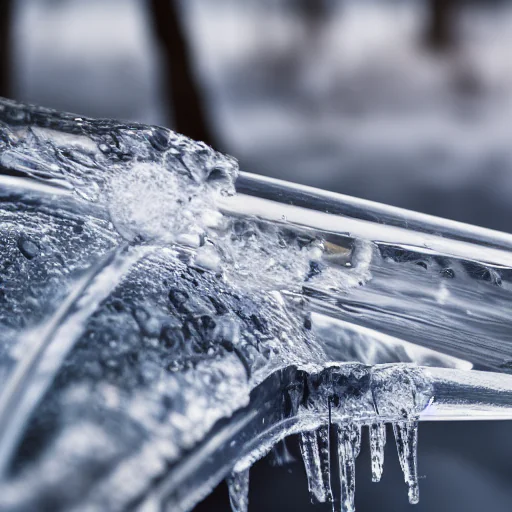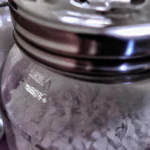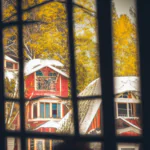When the temperatures outside start to plummet, one of the first things we start to worry about is our pipes freezing. But how cold does it have to be for pipes to freeze? We’ll answer that question and more in this article.
Table of Contents
What temperature pipes freeze?
Pipes can freeze at 32 degrees or below, but it will take a sustained period of time for this to happen. In other words, a pipe needs to be at freezing temperatures for at least half a day before homeowners have to worry about any freezing occurring.
There are several factors that can affect how likely pipes are to freeze. These include the type of material the pipe is made from, the amount of insulation surrounding the pipe, and the ambient temperature outside.
- Pipes made from metal are more susceptible to freezing than those made from plastic. This is because metal conducts heat more efficiently than plastic.
- Pipes that are not properly insulated are also more likely to freeze. Homeowners should make sure that their pipes are properly insulated with materials such as foam pipe insulation or electrical tape.
- Finally, the ambient temperature outside can also affect the likelihood of pipes freezing. If it is extremely cold outside, there is a greater chance that pipes will freeze.
There are several things that homeowners can do to prevent their pipes from freezing. These include keeping the temperature inside the home above 68 degrees, opening cabinet doors to allow warm air to circulate around pipes, and letting faucets drip slightly during very cold weather.
Will pipes freeze at 32 degrees?
It depends. Pipes can freeze at 32 degrees or below, but it will take a sustained period of time for this to happen. In other words, a pipe needs to be at freezing temperatures for at least half a day before homeowners have to worry about any freezing occurring.
There are some things homeowners can do to prevent their pipes from freezing, though. For example, leaving cabinet doors open to allow heat to reach pipes in colder areas of the home. Or, letting faucets drip overnight during a cold snap. Taking these precautions can help avoid a costly and stressful plumbing emergency.
If you do find yourself with frozen pipes, there are some things you can do to thaw them out. One option is to use a hairdryer on the affected pipe. Another is to wrap the pipe in a heating pad or an electric blanket.
If you can’t thaw the pipe out yourself, you’ll need to call a professional plumber. They will have the tools and experience necessary to get your water flowing again.
When should I be worried about pipes freezing?
As a general rule, the “temperature alert threshold” for freezing pipes is about 20 degrees Fahrenheit.
At this temperature, water inside exposed pipes will begin to freeze and expand, putting pressure on the pipe walls. If this expansion is significant enough, it can cause the pipe to burst.
There are several things you can do to help prevent your pipes from freezing, such as:
- Keep your thermostat set to at least 55 degrees Fahrenheit, even when you’re away from home.
- Insulate exposed pipes in your home, especially those that run along exterior walls or in unheated areas like the basement or attic.
- Seal any cracks or openings around doors and windows to keep cold air from coming into contact with your pipes.
If you’re concerned that your pipes may already be frozen, there are a few signs to look for:
- No water coming out of faucets: This is often the first sign that your pipes are frozen. If you turn on a faucet and no water comes out, it’s likely that the water inside the pipe is already frozen.
- Frost on exposed pipes: If you can see frost on any of the exposed pipes in your home, it’s a good indication that the water inside them has already started to freeze.
- Strange noises coming from pipes: As water freezes and expands inside a pipe, it can cause the pipe to rub against itself or the surrounding walls. This can create a banging or popping noise.
How much drip Do I need to prevent frozen pipes?
A dripping faucet wastes some water, so only pipes vulnerable to freezing (ones that run through an unheated or unprotected space) should be left with the water flowing. The drip can be very slight. A flow of one gallon per hour is enough to prevent freezing.
You can measure the flow from your faucet by filling a container of known volume (like a measuring cup or milk jug) and timing how long it takes to fill. Or you can estimate it by watching the drip and counting how many drips fall in a minute. Either way, compare your results to the table below to see how much water your faucet is wasting.
-
- One gallon per hour: prevent freezing
- One quart (two pints) per hour: slow rate of freezing
- Less than one quart per hour: very little effect on freezing
Do you drip hot water to keep pipes from freezing?
A trickle of hot and cold water might be all it takes to keep your pipes from freezing. Let warm water drip overnight when temperatures are cold, preferably from a faucet on an outside wall.
You can also keep your pipes from freezing by insulating them. Use pipe insulation sleeves or wrapping to protect your pipes, especially if they are exposed to cold air.
If you have a leaky pipe, fix it as soon as possible. A small leak can quickly turn into a big problem in cold weather.
If your pipes do freeze, turn on the faucet. As the ice melts, water will start to flow through the frozen section of the pipe. This will help thaw the pipe and relieve pressure that can cause it to burst.
If your pipes have already burst:
-
-
- Shut off the water at the main valve immediately to stop more water from coming into your home.
- If you have insurance, call your insurance company. They may have a 24-hour emergency service number.
- Do not try to thaw frozen pipes unless the main valve is shut off. Whenpipe begins to thaw and water starts to flow, there is an increased risk that the pipe will burst. Also, do not use a blow torch or any other open flame to thaw a frozen pipe. This could create a fire hazard.
- Call a plumber. A professional plumber can locate the source of the leak and make the necessary repairs.
-
Will shutting off water keep pipes from freezing?
To prevent pipes from freezing, the best thing to do is turn your water off if you can locate your valve. If not, leaving your faucets on with a slight trickle – not a drip – to prevent broken pipes, he says.
Pipe freezing is most likely to occur on exposed or inadequately insulated pipes, particularly where the air temperature is very cold. Once the water in the pipe freezes, it expands and puts pressure on the pipe walls. This pressure can cause the pipe to crack or burst.
If you shut off your water supply before pipes freeze, you can avoid this damage. But if your pipes have already frozen and you’re dealing with a leak, take the following steps:
-
-
-
- Shut off the water at the main valve: This will stop more water from coming into your home and causing more damage.
- Turn on the faucet: Doing this will help relieve pressure in the frozen pipe. As the ice melts, water will start flowing out of the faucet. Leave it on until full water pressure is restored.
- Thaw the pipe: You can use a hairdryer, heat lamp or small space heater to thaw a frozen pipe. Never use an open flame (such as a blowtorch) to thaw a pipe. Once the ice has melted, open all your faucets to help drain any remaining water and relieve pressure in the system.
-
-
If you can’t find the frozen section of pipe, if the frozen section is not accessible or if you can’t shut off your water supply, call a licensed plumber for assistance.




